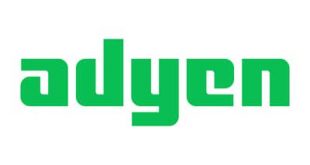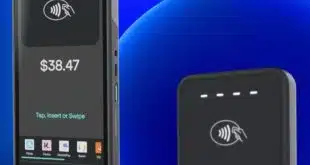By René Pelegero
The Fed’s task force has made a lot of progress, and on some fronts the results look promising. So why does it seem like the creation story of Visa and Mastercard all over again?
It has been a long time since the initial Faster Payments discussions in 2013, and one could conclude that the end of the road is near. In April, at the NACHA Payments 2017 conference in Austin, Texas, there were two dominant solutions ready to launch, The Clearing House’s (TCH’s) Real-Time Payment System (RPS) and Early Warning Services’ (EWS’s) Zelle Network; unfortunately, they are not interoperable.
Although the Faster Payments Task Force (FPTF) and The Federal Reserve System—particularly the folks coordinating the Task Force at the Chicago Fed—deserve recognition for the progress made thus far, much work remains and there are major challenges looming on the horizon.
Most other countries (the U.K., Australia, Mexico, etc.) have taken a more prescriptive approach to developing faster payments. Regulators or central banks create standards and roles so that private-industry players can act in harmony. Despite all its shortcomings, the European Payments Council (EPC) did this part right by defining record and file formats for Single Euro Payments Area (SEPA) direct debits and credit transfers, establishing the roles for pan-European clearing and settlement mechanisms (CSMs) and writing the regulatory framework that was adopted into law in all participating countries. Private industry then went on to implement interoperable solutions based on these standards.
The Fed and the FPTF did not consider such an approach. By setting “effectiveness criteria” instead of standards, existing players got the time and space to develop their own proprietary solutions which resulted in the creation of two dominant players: Zelle and RPS. As mentioned, these solutions are not interoperable. Also, they only work with their member financial institutions (FIs). All the rules, pricing, message formats, and so on are set and controlled by these two large, bank-dominated entities. It feels like new versions of Visa and Mastercard.
Grading Progress So Far
Besides standards and a framework, there are six other criteria required to create a new method of payment. Let’s review and grade the progress we have made so far as an industry in developing these:
1. A clearing and settlement mechanism (CSM).
This has been accomplished through RPS (Zelle does not have settlement, only clearing), but there is no operator of last resort.
Grade: A-
2. Real-time posting at financial institutions.
This also has been accomplished at all financial-institution members of RPS and Zelle. Since the interface to these solutions is proprietary, any FI wanting to participate will have to either choose one solution or implement two integrations.
Grade: B+
3. Credentials.
Whereas Zelle leans towards using social credentials (e.g. email addresses and phone numbers) as payment credentials, TCH still requires American Bankers Association routing-and-transit/account numbers. What is lacking is a universal directory—a key component for interoperability. As with phone networks, directories are needed for routing, in this case to route payments to FIs through the appropriate network. Zelle has its own proprietary directory and TCH
has still not decided whether to build its own or use Zelle’s.
Further, little has been done to standardize credentials so they can be carried on mobile phones and presented like payment cards are today. Finally, social credentials do not work well with corporate accounts, leaving a huge gap in ubiquity and functionality.
Grade: C-
4. Risk Management.
It is assumed that both TCH and EWS, along with their FIs, have established the appropriate controls for counterparty risk management so that participating financial institutions can conform with the Liquidity Coverage Ratio and Net Stable Funding Ratio advocated by Basel III, a global regulatory framework for the banking industry. As for consumer safety, little has been said about how social credentials can be made secure and tamper-proof without creating unwanted friction.
Grade: B
5. Business/Economic/Legal Model.
Given the current battle royal regarding interchange between merchants, on the one hand, and Visa, Mastercard, and card issuers on the other, there could not be a more important issue to debate openly than pricing. By letting private industry set rules and pricing for these services, businesses comparable to Visa and Mastercard are created. While this may be quite acceptable to some, the industry missed the opportunity to deliberate the merits of different pricing methods (e.g. interchange, sender/receiver pay, etc.) and how to prevent the market dominance of a new duopoly.
So far, preliminary pricing seems reasonable for “send” transactions. However, the cost and method of pricing for RPS’s Request for Payment—probably the most critical transaction to support commerce—remains open, with TCH leaning toward an interchange-based model.
In all fairness, TCH and EWS have the right to price their services as they wish; it is up to users and the free market to decide whether to use their services. Yet, the Fed’s charter to “improve the speed and efficiency of the U.S. payment system from end-to-end” means that the needs of all payment actors (e.g. consumers, merchants, corporates, governmental agencies, and small financial institutions) must be considered, not just those of large clearing banks.
Grade: F
6. Branding/Market Education.
Outside of industry wonks, few care about faster payments. It would be unfair to grade education efforts when there are no products to educate on. However, to avoid repeating the U.K. fiasco related to the demise of paper checks, it’s critical that key stakeholders and consumer groups receive information about upcoming changes with plenty of lead time.
Grade: Incomplete
In July, McKinsey will publish its review of the submitted solutions against the “effectiveness criteria” that have been developed. The Fed, the FPTF, and the Fed board will issue their own reports shortly thereafter. Without any knowledge of what these reports will say, here’s an assessment of what we have: two (or more) faster-payments solutions with different degrees of completeness that do not interoperate. A more proactive Fed could have mitigated this outcome. But we likely would not have made this much progress, so there is something to be said for the laissez-faire approach.
Yet, the outcome seems sub-optimal.
Much work remains for faster payments: interoperability, ubiquity, credential safety and portability, body of law, links to international payment systems, and, of course, education. However, the biggest challenge for U.S. FIs is the global move towards open application programming interfaces. For example, under the European Payment Services Directive 2 (PSD2), banks must grant access to bank accounts to Payment Initiators (e.g. merchants) through open APIs without intermediaries such as Visa or Mastercard.
By contrast, the U.S. is creating brand-new payment rails that are tightly controlled by two large incumbent operators, both of which are controlled by the largest clearing banks in the country.
Open APIs will re-architect banking services and will drive development of new products that will ultimately drive stronger banking offerings. Yet, the U.S. keeps prolonging the lifespan of legacy technologies way past their optimal end. It is ironic that “over-regulated” European banks will be positioned to freely capitalize on new revenue sources thanks to products born from their PSD2 IT investments, while “free-enterprise” U.S. banks will continue to hang on to architectures and operating business models from the 1970s.
René Pelegero is president and managing director of Retail Payments Global Consulting Group L.L.C., Kirkland, Wash. Reach him at renep@rpgc.com.





